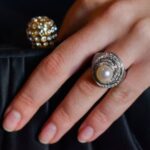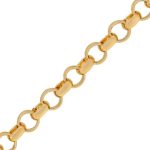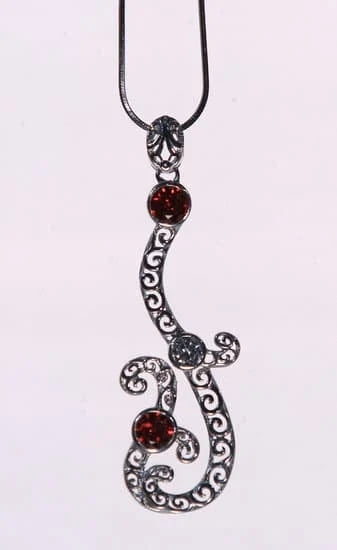Selling your fashion jewelry to stores can be a lucrative business opportunity that allows you to showcase your creativity, reach a wider audience, and establish yourself as a reputable brand in the fashion industry. By partnering with retailers, you can tap into their existing customer base and leverage their marketing efforts to increase the visibility of your jewelry.
In this article, we will guide you through the process of selling your fashion jewelry to stores successfully. We will explore various strategies and techniques that will help you navigate the market, perfect your product, build your brand identity, and craft an irresistible sales pitch. Additionally, we will delve into pricing strategies, effective marketing techniques, creating a professional presentation, negotiating with buyers, and building long-term relationships with stores.
The first step in this journey is understanding the market by researching and identifying potential stores that align with your target audience. Once you have established who your ideal customers are and have conducted thorough research on what stores would cater to them best, you can then focus on perfecting your product. Creating unique and high-quality fashion jewelry will set you apart from competitors and attract both store buyers and customers.
Stay tuned as we guide you through each step of selling your fashion jewelry to stores and provide valuable insights from industry experts. Whether you are just starting or looking for ways to expand and grow your existing business, this article offers practical advice that will steer you towards success in the competitive world of fashion jewelry retail.
Understanding the Market
Conducting Market Research
Before you can begin selling your fashion jewelry to stores, it is crucial to conduct thorough market research to identify potential stores that align with your brand and target customer base. Start by researching the overall market for fashion jewelry, including trends, popular styles, and consumer preferences. This will help you understand the demand for your product and tailor your offerings accordingly.
Next, create a list of potential stores that could be a good fit for your jewelry. Look for stores that specialize in fashion accessories or have a history of carrying similar products. Consider factors such as their location, customer demographic, and overall aesthetic. Additionally, pay attention to whether these stores carry exclusive or local brands, as this may present an opportunity for collaboration.
Building Relationships with Store Buyers
Once you have identified potential stores, it is important to build relationships with store buyers or decision-makers. Attend trade shows and industry events where you can meet these individuals face-to-face and showcase your jewelry. Take the time to understand their buying processes, what they value in a vendor relationship, and any specific requirements they may have.
When reaching out to store buyers directly, personalize your communication and highlight what makes your jewelry unique and appealing to their customers. Offer samples or lookbooks that exemplify the quality and craftsmanship of your pieces. Building trust and rapport with store buyers is essential in convincing them to give your jewelry a chance.
Researching Store Policies
In addition to understanding the preferences of store buyers, it is equally important to research individual store policies before approaching them. Some may require exclusivity agreements or have specific terms regarding pricing, consignment options, or return policies. Familiarize yourself with these policies so that you can tailor your pitch accordingly.
Furthermore, consider collaborating with local boutiques or participating in pop-up shops as an entry point into the market. These opportunities can help you gain exposure, gauge customer response to your jewelry, and potentially attract the attention of larger retailers.
By thoroughly researching potential stores, building relationships with store buyers, and understanding individual store policies, you can position your fashion jewelry for success in the retail market.
Perfecting Your Product
Creating unique and high-quality fashion jewelry is essential in order to succeed in selling your products to stores. In this section, we will explore some key strategies and considerations for perfecting your product.
Understanding Current Fashion Trends
Before you start designing your fashion jewelry, it’s important to have a deep understanding of current fashion trends. Research the latest styles and designs that are popular among consumers, paying close attention to jewelry trends specific to your target market. This will help you create pieces that are not only unique but also aligned with the interests and preferences of potential buyers.
Choosing Quality Materials
The quality of materials used in your fashion jewelry plays a significant role in its appeal to both stores and customers. Opt for high-quality materials such as sterling silver, gold-plated metals, semi-precious stones, or imitation pearls depending on your target market and price range. Make sure that the materials are durable and will maintain their beauty over time, as this can contribute to customer satisfaction and increase the likelihood of repeat purchases.
Designing Unique Pieces
To stand out from the competition, focus on creating unique designs that showcase your creativity and craftsmanship. Take inspiration from various sources such as nature, art, or cultural influences, but avoid directly copying existing designs. Experiment with different shapes, colors, textures, and patterns to make your jewelry truly one-of-a-kind.
Aim for a diverse product line by offering various styles, ranging from delicate minimalist pieces to bold statement jewelry. This allows stores to cater to different customer preferences and increases the chances of finding retailers interested in carrying your collection.
By focusing on these aspects: understanding current fashion trends, choosing quality materials, and designing unique pieces – you can ensure that your fashion jewelry stands out among competitors’ products and appeals to both stores and customers alike.
Building Your Brand
In order to successfully sell your fashion jewelry to stores, it is crucial to develop a strong brand identity and story. Building a brand goes beyond just creating beautiful pieces of jewelry; it involves crafting a narrative that resonates with both store owners and customers. By developing a unique brand identity and story, you can differentiate yourself from the competition and build a loyal customer base.
To start building your brand, it is important to define your target audience. Understanding who your ideal customers are will help you tailor your messaging and design aesthetic to appeal to their preferences. Conduct market research and analyze trends in the fashion industry to determine what types of jewelry are popular among your target demographic.
Once you have identified your target audience, you can begin developing a brand identity that aligns with their values and aspirations. This includes creating a compelling name for your jewelry line, designing a visually appealing logo, and selecting colors and fonts that convey the essence of your brand. It is also important to create consistent branding across all touchpoints, from social media platforms to packaging materials.
In addition to visual elements, developing a strong brand story is essential for connecting with both store owners and customers on an emotional level. Your brand story should communicate why you started your jewelry business, what inspires you, and what sets your pieces apart from others in the market. Authenticity is key in storytelling – be honest about your values and passion for creating unique fashion jewelry.
By focusing on developing a strong brand identity and story, you can create an emotional connection with store owners and customers alike, increasing the likelihood of them choosing to stock or purchase your fashion jewelry. Remember that building a brand takes time and consistency – continue refining and reinforcing your brand messaging as you grow in order to stay relevant in the competitive fashion industry.
| Benefit | Action Steps |
|---|---|
| Define target audience | Conduct market research and analyze trends in the fashion industry to identify your target audience. |
| Create compelling brand identity | Develop a unique name, design a visually appealing logo, select colors and fonts that convey your brand’s essence. |
| Craft authentic brand story | Create a narrative that communicates why you started your business, what inspires you, and what sets your pieces apart. |
Crafting an Irresistible Sales Pitch
One of the key factors in successfully selling your fashion jewelry to stores is being able to craft an irresistible sales pitch. This is what will convince store owners and buyers that your jewelry is worth stocking and ultimately selling to their customers. Here are some strategies to consider when creating your sales pitch:
- Highlight the Unique Selling Points: Start by identifying the unique aspects of your fashion jewelry that sets it apart from other products in the market. It could be the materials used, the design, or even a story behind it. Make sure to emphasize these points in your sales pitch, explaining why they make your jewelry a must-have for customers.
- Showcase the Quality: Quality is extremely important when it comes to fashion jewelry. Make sure to mention any high-quality materials you use and highlight any craftsmanship techniques that set your pieces apart. Also, consider offering warranties or guarantees on your products to assure store owners that they are investing in a reliable product.
- Provide Social Proof: One effective way to convince stores to stock your jewelry is by showcasing positive reviews, testimonials, or press coverage you have received. Include quotes or excerpts from satisfied customers or reputable sources who have highlighted the quality and uniqueness of your jewelry.
To make your sales pitch even more compelling, consider including an HTML unordered list like this:
- Communicate how well your jewelry aligns with the store’s target market and customer base.
- Offer special deals or promotions exclusively for stores that stock your jewelry.
- Tailor your pitch according to each individual store’s preferences and needs.
- Provide retailers with marketing materials like high-quality images, social media posts, or display ideas that can help them effectively market and sell your jewelry.
By crafting an irresistible sales pitch, you can significantly increase the chances of convincing stores to stock and sell your fashion jewelry, ultimately boosting its visibility and reach among customers.
Pricing Strategies
Determining the right price point for your fashion jewelry is crucial in attracting both stores and customers. Pricing your products too high may deter potential buyers, while pricing them too low could undermine the quality and value of your jewelry. It is essential to strike a balance that reflects the uniqueness, craftsmanship, and materials used in your pieces, while also considering market demand and competition.
Researching Market Prices
To determine the right price point for your fashion jewelry, it is important to research and understand current market prices within the industry. Look at similar pieces from other brands that target a similar customer base. Compare factors such as materials, craftsmanship, and design complexity to get an idea of pricing trends. This will help you position your products competitively in the market.
Calculating Costs
In addition to researching market prices, it is vital to calculate all costs associated with producing and selling your fashion jewelry. Consider factors such as materials, labor, packaging, shipping, marketing expenses, and overhead costs when determining your pricing strategy. By understanding your costs thoroughly, you can ensure that your prices cover expenses while still allowing for a reasonable profit margin.
Consider Value Perception
Customers often associate higher prices with higher quality and value. Therefore, it is crucial to consider how you want potential buyers to perceive your fashion jewelry. If you are targeting a luxury market segment or positioning yourself as a high-end brand, pricing your pieces at a premium level may be appropriate. On the other hand, if you are targeting a more affordable or budget-conscious market segment, setting lower price points may be more effective.
Tiered Pricing Structure
One effective strategy for determining the right price point for your fashion jewelry is to offer tiered pricing options. This allows customers with different budgets to choose from a range of options within their price range without compromising on quality or design. Offering different price tiers also provides flexibility for stores to select pieces that suit their target customers and price range.
Determining the right price point for your fashion jewelry requires careful consideration of various factors, including market research, cost analysis, value perception, and pricing structure. By finding the right balance between these elements, you can set prices that attract stores and appeal to customers while still ensuring profitability for your business.
Effective Marketing Techniques
Once you have perfected your product and developed a strong brand identity, it’s time to focus on effectively marketing your jewelry to stores and customers. Effective marketing techniques can help you increase brand visibility, attract potential buyers, and ultimately drive sales. Here are some strategies to consider:
- Social Media Advertising: Utilize social media platforms such as Instagram, Facebook, Pinterest, and Twitter to showcase your fashion jewelry and reach a wide audience. Create visually appealing content that highlights the unique features of your products and engages potential customers. Collaborate with influencers or fashion bloggers who align with your brand values to promote your jewelry and increase exposure.
- Email Marketing Campaigns: Build an email list of potential customers who would be interested in purchasing fashion jewelry. Send regular newsletters and updates about new collections, exclusive discounts, or upcoming events to keep them engaged with your brand. Personalize your emails by addressing each recipient by their name and segmenting your email list based on preferences or past purchases.
- Participate in Tradeshows and Events: Tradeshows and events are great opportunities to showcase your fashion jewelry to store owners, buyers, and potential customers in person. Research industry-specific tradeshows or local fashion events where you can exhibit your products. Create an eye-catching booth display that accurately represents your brand aesthetic and story.
| Marketing Technique | Description |
|---|---|
| Social Media Advertising | Create visually appealing content on platforms like Instagram or Facebook to showcase the unique features of your fashion jewelry. |
| Email Marketing Campaigns | Build an email list of potential customers. Send personalized newsletters about new collections, exclusive discounts, or upcoming events. |
| Participating in Tradeshows and Events | Showcase your fashion jewelry to store owners, buyers, and potential customers in person at tradeshows and fashion events. |
Remember to track the effectiveness of each marketing technique by analyzing metrics like website traffic, engagement rates on social media posts, or conversion rates from email campaigns. Adjust your strategies accordingly to maximize your marketing efforts and attract more stores and customers to your fashion jewelry brand.
Creating a Professional Presentation
When it comes to selling your fashion jewelry to stores, creating a professional presentation is crucial. This section will focus on compiling a sales kit and line sheet that will impress potential buyers and help you showcase your products effectively.
To start, it is important to gather all the essential materials for your sales kit. This includes high-quality images of your jewelry, product descriptions, pricing information, and any additional marketing materials that highlight the unique features of your brand. Organize these materials in a visually appealing manner, using a folder or binder that reflects the aesthetic of your brand.
Additionally, including a well-designed line sheet is essential for presenting your jewelry collection cohesively. A line sheet is essentially a catalog that contains all the necessary details about each piece of jewelry in your collection. It should include clear and detailed images along with important information such as product name, SKU number, wholesale pricing, sizes available, and any special features or materials used.
Here are some key elements to include in your sales kit:
- An introduction: Start by introducing yourself and giving an overview of your brand’s story and mission.
- High-quality visuals: Include professional photographs or renderings of each item in your collection from various angles.
- Detailed descriptions: Provide concise but informative descriptions of each piece that highlight its unique design elements and materials used.
- Pricing information: Clearly list both retail and wholesale pricing based on quantity ordered or minimum order requirements.
- Contact information: Make it easy for store owners or buyers to get in touch with you by including all relevant contact information such as phone numbers, email addresses, and social media handles.
Remember that presentation is key when it comes to convincing store owners to stock your fashion jewelry. By putting together a professional sales kit and line sheet that effectively showcases the quality and uniqueness of your products, you will increase the likelihood of grabbing buyers’ attention and securing orders for your fashion jewelry collection.
Navigating Negotiations
Once you have identified potential stores and perfected your product, it is time to navigate negotiations with buyers and close the deal. This section will provide you with valuable tips on how to approach buyers and effectively negotiate the terms of your agreement.
When approaching buyers, it is essential to do thorough research on each store and understand their target audience, brand values, and product preferences. This knowledge will allow you to tailor your sales pitch specifically to their needs and increase the chances of a successful negotiation. Additionally, be prepared to demonstrate the unique selling points of your fashion jewelry and explain why it would be a great addition to their store.
During negotiations, it is crucial to maintain professionalism and confidence. Clearly communicate your pricing structure, quantity discounts, and any other incentives you can offer. Be open to negotiating on terms such as payment schedules or exclusivity agreements, but also know your limits so that you do not undervalue your products. Remember that negotiations should be a win-win situation for both parties involved.
Closing the deal involves finalizing all aspects of the agreement, such as delivery dates, payment terms, shipping arrangements, and any additional requirements specific to the buyer. Prepare a contract or purchase order that outlines these details clearly so that both parties are in agreement before moving forward.
| Information | Description |
|---|---|
| Store Name | The name of the store you are contacting. |
| Contact Person | The name of the person responsible for making purchasing decisions. |
| Target Audience | A brief description of the store’s target audience and customers. |
| Brand Alignment | An explanation of how your fashion jewelry aligns with the store’s brand values and aesthetic. |
| Unique Selling Points | The specific features or benefits that make your jewelry stand out from competitors. |
By approaching buyers with confidence, conducting thorough research, and effectively negotiating, you will increase your chances of closing lucrative deals with stores and expanding your reach in the fashion jewelry market. Remember to maintain professional relationships with buyers even after closing the deal, as this can lead to repeat business and further opportunities for growth.
Building Long-Term Relationships
Once you have successfully convinced a store to stock your fashion jewelry, it is crucial to focus on building and maintaining strong relationships with these stores. By cultivating long-term partnerships, you can not only secure repeat orders but also expand your reach through word-of-mouth referrals. Here are some strategies to help you maintain these valuable relationships:
- Provide exceptional customer service: One of the most effective ways to build lasting relationships with stores is by offering excellent customer service. Be responsive to their needs and inquiries, promptly addressing any concerns that may arise. Ensure that all orders are fulfilled accurately and in a timely manner. By consistently exceeding expectations, you will establish yourself as a reliable and trusted vendor.
- Offer incentives for loyalty: To encourage stores to continue purchasing your fashion jewelry, consider implementing loyalty programs or offering special discounts for repeat orders. This not only incentivizes them to keep stocking your products but also shows them that you value their business.
- Stay updated with industry trends: Keep abreast of the latest fashion trends and market demands in order to provide stores with fresh and relevant designs. Regularly introduce new collections or seasonal pieces that align with current styles. By demonstrating your understanding of the market, you will solidify your position as a forward-thinking brand.
Expanding your reach:
- Attend trade shows and exhibitions: Participating in relevant trade shows and exhibitions is an excellent way to showcase your fashion jewelry to a wider audience of potential buyers. These events allow you to network with industry professionals, gain exposure, and develop new business opportunities.
- Collaborate with influencers or bloggers: Capitalize on the power of social media by collaborating with influencers or bloggers who align with your brand aesthetic. These individuals can promote your fashion jewelry to their followers, increasing brand visibility and driving traffic to the stores that carry your products.
- Explore online platforms: In addition to physical stores, consider selling your fashion jewelry through online platforms such as e-commerce websites or marketplaces. This allows you to reach a broader customer base and tap into the growing trend of online shopping.
By building strong and lasting relationships with stores and continuously expanding your reach, you can create a solid foundation for long-term success in selling your fashion jewelry. Remember to always prioritize exceptional customer service, stay updated with industry trends, and explore various marketing channels to maximize your brand’s visibility and growth.
Conclusion
Selling your fashion jewelry to stores can be a highly lucrative business opportunity. By following the steps outlined in this article, you can not only understand the market and perfect your product, but also build a strong brand identity, craft an irresistible sales pitch, determine the right price point, and effectively market your jewelry to stores and customers.
Additionally, creating a professional presentation and navigating negotiations with buyers will help you close deals and build long-term relationships with stores, ultimately allowing you to expand your reach and achieve success.
One of the key factors in selling your fashion jewelry to stores is understanding the market. Thoroughly researching and identifying potential stores that align with your target audience will increase your chances of success. Furthermore, perfecting your product by creating unique and high-quality fashion jewelry is essential. Your product should stand out from competitors’ offerings, encouraging stores to stock it in their inventory.
Building a strong brand identity and story is another crucial aspect of selling fashion jewelry to stores. A well-developed brand will resonate with both store owners and customers alike, increasing demand for your products.
Alongside this, mastering the art of crafting an irresistible sales pitch is vital in convincing stores to stock your jewelry. By highlighting the unique features and benefits of your products while addressing store owners’ needs and concerns, you can make a compelling case for why they should carry your items.
In determining the right price point for your fashion jewelry, thorough pricing strategies are critical. Consider factors such as production costs, market competition, and perceived value when setting prices. Effective marketing techniques are also instrumental in promoting your jewelry to both stores and customers. Utilize social media platforms, online advertising, influencer collaborations, and other marketing tactics to create awareness and drive demand for your products.
Creating a professional presentation that includes a sales kit and line sheet will help elevate your brand’s credibility during presentations with buyers. Additionally, approaching negotiations with confidence and professionalism will give you an edge in closing deals. By understanding buyers’ needs, being flexible with terms, and showcasing the value your jewelry brings to their stores, you can successfully navigate negotiations and secure partnerships.
Building long-term relationships is key to expanding your reach in selling fashion jewelry to stores. Maintain open and honest communication with store owners, provide exceptional customer service, and be responsive to their needs. This will help foster loyalty and encourage repeat purchases. Additionally, consider exploring opportunities for collaborations or exclusive collections with stores to further establish your brand presence.
In conclusion, by following the steps outlined in this article and embracing the road to success, you have a strong foundation for selling your fashion jewelry to stores. Remember that success in this industry requires hard work, dedication, and persistence.
With a well-researched market strategy, a unique and high-quality product offering, an effective sales pitch, competitive pricing strategies, and strategic marketing techniques, along with maintaining long-term relationships with stores, you can achieve significant growth and profitability in selling your fashion jewelry.
Frequently Asked Questions
What is the best way to sell costume jewelry?
When it comes to selling costume jewelry, the best way is to focus on presenting and marketing the pieces effectively. Start by taking high-quality, well-lit photographs that showcase the details of each item, and create an online presence through platforms like Etsy or your own website. Clearly describe the materials used, any unique features, and provide accurate measurements.
Additionally, engaging with customers and potential buyers through social media channels can help generate interest and build a loyal customer base. Hosting pop-up shops or participating in local craft fairs can also expose your costume jewelry to a wider audience.
Is selling fashion jewelry profitable?
Selling fashion jewelry can indeed be profitable if you approach it strategically. The key lies in offering unique and on-trend designs that cater to your target market’s preferences. Conduct market research to identify current fashion trends and styles that are in high demand.
This knowledge will enable you to curate a collection of fashion jewelry pieces that appeal to potential customers. Ensure your pricing strategy is competitive yet allows for a healthy profit margin. Building relationships with suppliers who can offer quality pieces at reasonable prices will also contribute to your profitability as a fashion jewelry seller.
How do I become a jewelry reseller?
To become a jewelry reseller, it’s important first to determine your niche within the industry and do thorough research on different suppliers. Decide whether you want to specialize in fine jewelry or focus on more affordable options like costume or fashion jewelry.
Look for reputable wholesalers or manufacturers who offer quality products along with attractive wholesale prices that allow you room for profit margins. Establishing strong supplier relationships is crucial for long-term success as a reseller.

Welcome to my jewelry blog! My name is Sarah and I am the owner of this blog.
I love making jewelry and sharing my creations with others.
So whether you’re someone who loves wearing jewelry yourself or simply enjoys learning about it, be sure to check out my blog for insightful posts on everything related to this exciting topic!





